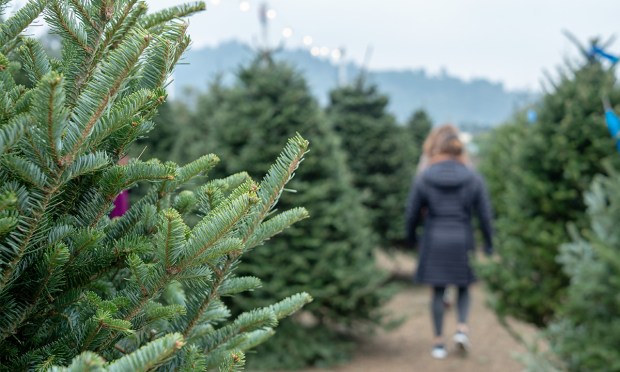
As the festive season sleighs in and inflation plays Scrooge, one can’t help but wonder: Are folks still decorating their homes with real Christmas trees?
As per the Real Christmas Tree Board, findings from a survey covering 55 Christmas tree wholesalers indicate that nearly all of them intend to raise prices. Most wholesale price hikes range between 5% and 15%, though certain instances show 21% or even higher spikes.
Even with increased prices, consumers still opt to buy the real thing for various reasons.
The disclosure follows a recent PYMNTS report that indicates that in today’s consumer-centric culture, it’s not unusual for people — even those grappling with bill payments — to occasionally indulge in extravagant spending.
According to findings detailed in “The Paycheck-to-Paycheck Report: The Nonessential Spend Deep Dive Edition,” these indulgences, frequently centered around nonessential items, offer feelings of pleasure and contentment.
Read more: 60% of Cash-Strapped Consumers Still Splurge on Nonessentials
With that in mind, as retailers strategically focus on delivering value to customers this quarter to stimulate spending, Christmas tree farms find themselves exempt from such challenges.
Read more: Retailers Play the Value Card to Capture Consumer Spend
“I got tired of pulling the fake Christmas Tree out with the lights already attached to it. I wanted to do it the old-school way,” said John Atchison told Fox Business.
On the other hand, Sandra Serna mentioned that she ceased purchasing artificial Christmas trees several years back. Instead, she has established a family tradition of shopping at Richardson Christmas Tree Farm in McHenry County, Illinois.
That said, real Christmas trees transcend mere decorations; they embody a cherished tradition with profound emotional significance for numerous families. The process of picking, decorating and sprucing up the tree creates a memory lane filled with ornaments of togetherness and continuity. Despite inflation, individuals are often inclined to set aside a portion of their budget to preserve these time-honored traditions, recognizing their role in creating enduring memories.
The increasing prominence of environmental concerns has driven a growing number of consumers towards choosing real Christmas trees over their artificial counterparts. Real trees, being biodegradable, contribute to a more sustainable approach to holiday decorating. Choosing a real Christmas tree is also a way for consumers to branch out and support local economies, as many trees are grown by nearby farmers.
Moreover, the allure of a real Christmas tree extends beyond its visual appeal. The fragrant scent of pine needles and the tactile engagement of touching and decorating a real tree add to a multisensory holiday atmosphere that artificial trees simply cannot replicate. The sensory richness of a real tree becomes a significant factor, reinforcing its position as an irreplaceable element of the festive season.
While we could tell you that farmers in Illinois and Wisconsin mention it can take up to 10 years to grow a tree, with the weather acting as a wild card each year, in the spirit of PYMNTS and our readership, we’ll share the following:
In 2023, Americans are set to “spruce” up their celebrations by investing around $5.6 billion in Christmas trees, marking an increase from the $5 billion spent in the preceding year. And of the total American households, 43% are expected to partake in the holiday tradition of purchasing a Christmas tree.
The forecast estimates the acquisition of 24.7 million real trees, with a projected median cost of $86.94, showcasing an 8.67% rise from the average expenditure of $80 in 2022.
Simultaneously, around 28.69 million artificial trees are predicted to be bought, averaging $119.13. That said, the forecast suggests that Christmas tree spending is all set to “sleigh” expectations, projecting a 12.41% growth in 2023, making it a truly tree-rific holiday season.
According to the National Christmas Tree Growers Association, when buying a Christmas tree, whether from a store or a cut-your-own farm, there are important things to consider. If you’re getting it from a store, make sure to measure your space, think about your decoration preferences, and learn about different tree types. It’s also crucial to pick a well-lit store, ask about delivery, and understand how the tree will do in your climate. Check the tree’s freshness using tests like the branch/needle test and look for signs of dryness. And don’t forget to ask about recycling options.
Now, if you’re venturing to a cut-your-own farm, be ready for an outdoor adventure. Ask about provided equipment, understand the pricing and choose a tree with a straight trunk. Remember that some needle shedding is normal in the fall, and farms usually offer shaking or blowing services. Cutting the tree is a two-person job, and you’ll need to clean and net it for easier transportation.
That said, following care tips is important, especially for trees from cut-your-own farms, as they might need extra attention. Being well-informed and careful ensures you’ll have a festive and fresh holiday centerpiece.